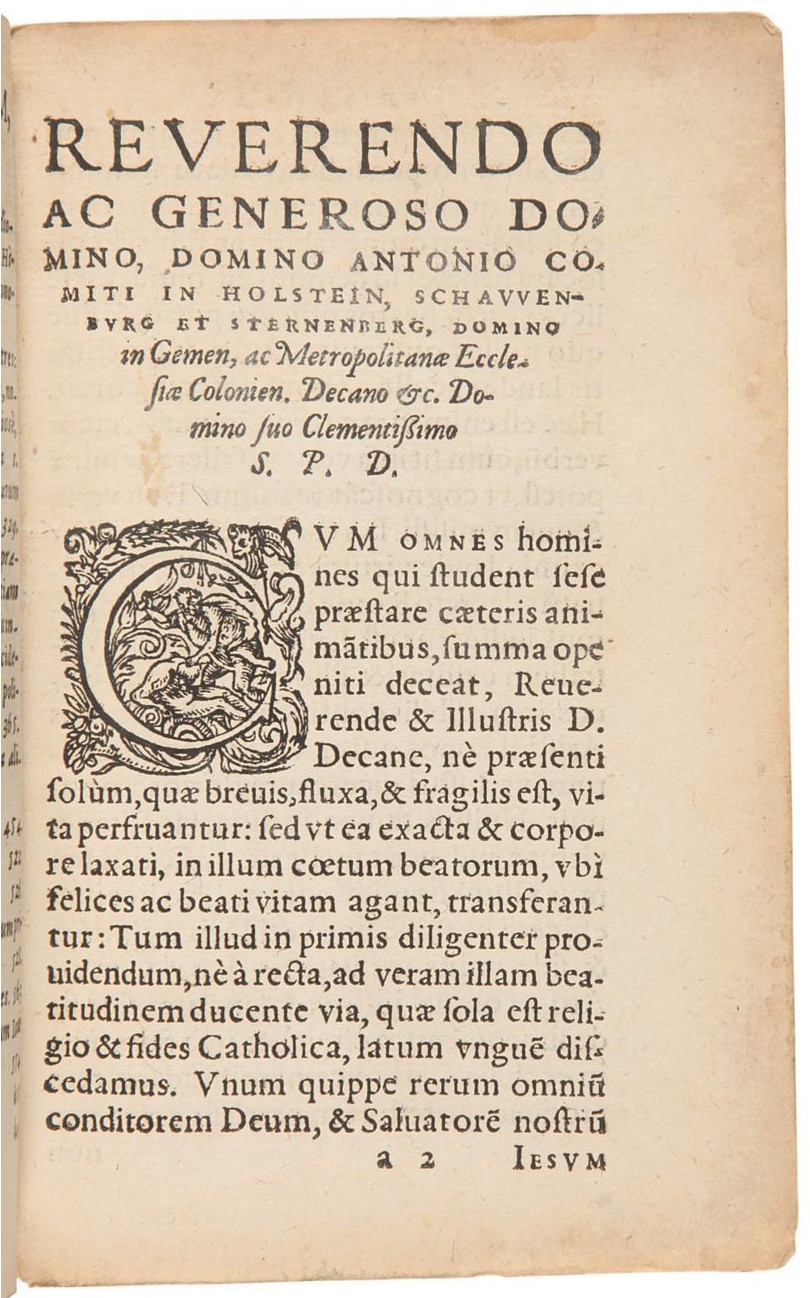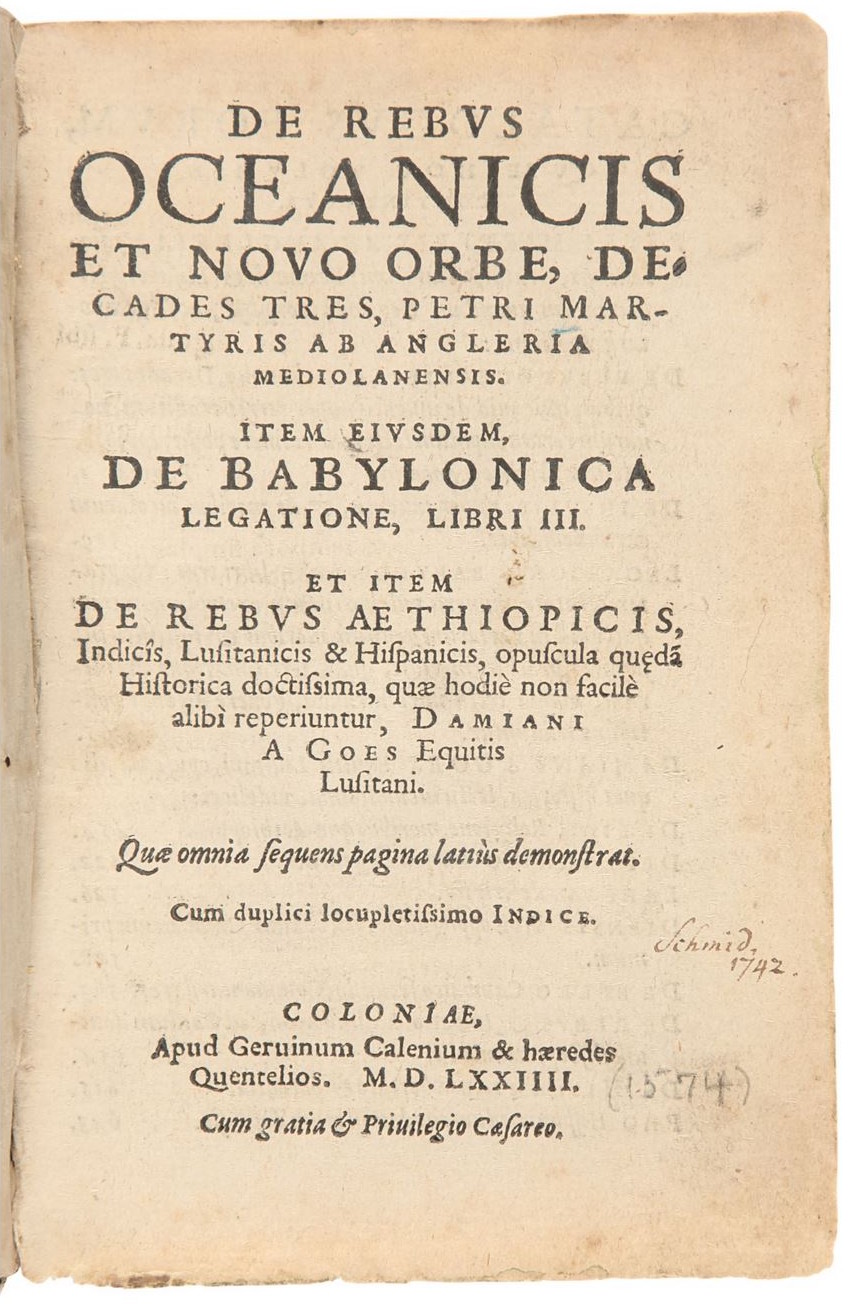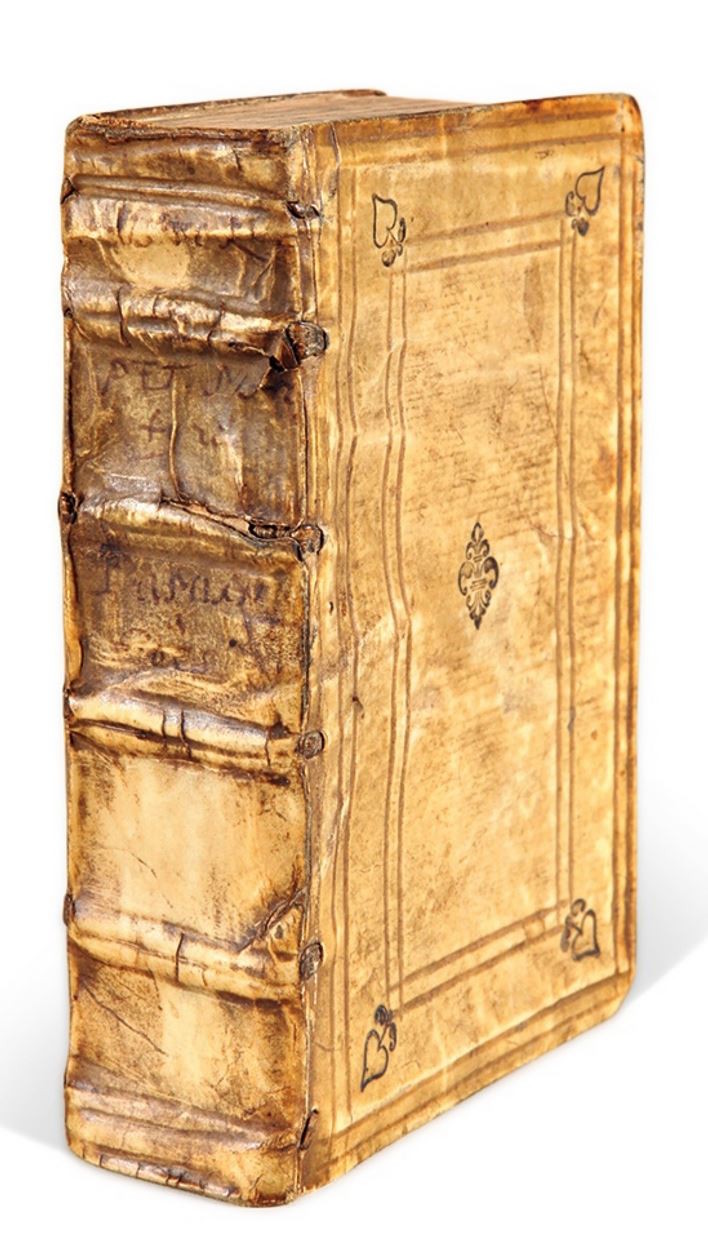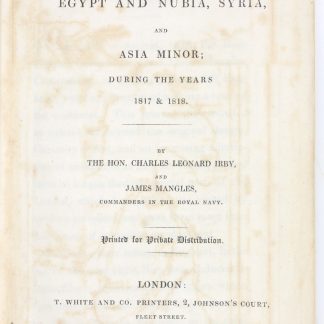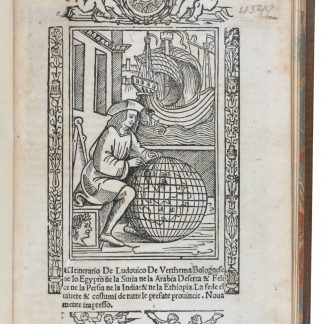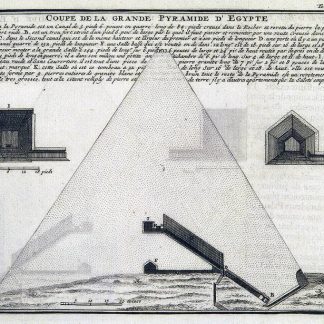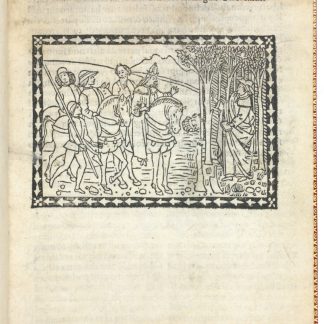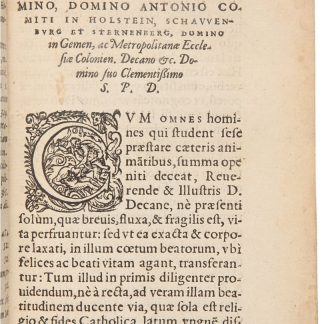The most accessible edition of one of the foundational works of New World history
De rebus oceanicis et novo orbe, decades tres [...]. Item eiusdem, De Babylonica legatione, libri III. Et item De rebus Aethiopicis, Indicis, Lusitanicis, & Hispanicis, opuscula quaedam historica doctissima, quae hodie non facile alibi reperiuntur, Damiana a Goes Equitis Lusitani.
8vo (110 x 162 mm). (48), 655, (31) pp., final blank. With decorative woodcut initials. Contemporary full vellum, tooled in blind, with handwritten spine title.
€ 9,500.00
The collected Peter Martyr: the foremost chronicler of the New World in its earliest period, including all of his most important texts on American discovery. Besides all of the chronicles Martyr wrote as official historian of the Indies, covering the years 1492-1516, this important and early edition adds some important works: Martyr's three books of "De babylonica legatione", describing his diplomatic mission to Egypt in 1501-02 in which he persuades the sultan "to adopt a policy of clemency towards the Christians of Egypt and Palestine following the defeat of the Moors in Spain" (Howgego); Martyr's 1521 Basel letter, which contains the text of the lost first Cortés letter describing his initial landing and forays into Mexico; and Damiao de Goes's famous work on the religion and customs of Ethiopia (with a description of Lapland), originally published in 1540, included by Harrisse in Additions (144).
Peter Martyr was an Italian swept up in the milieu of the Spanish court, a tutor to princes, and a personal friend of the likes of Christopher Columbus, Ferdinand Magellan, and Amerigo Vespucci. It was Martyr who wrote the first accounts of Central and South America in a series of letters and reports, which were subsequently published in compilations referred to as his "Decades". Much of what is known about the looks, personality, and minds of the early explorers come from Martyr's letters, which sometimes included lively gossip. He was the first to describe contact between Europeans and Native Americans, and provided vital early insight into Pre-Columbian American civilizations; he was the first to understand the importance of the Gulf Stream, and the first European to reference India rubber.
Front pastedown has handwritten ownerships of Johannes Wedemhove from Saxony ("Sum Ioannis Vuedemhovii Lu... Saxonis", ca. 1580, as dated on flyleaf opposite), of the Rostock philosopher Angelus Johann Daniel Aepinus, 1718-84 ("AJD Aepinus"), and of Dr. Maurice (Ruddell) Ries (b. 1906) of the Middle American Research Institute at Tulane University, New Orleans, dated 1950; title-page bears the name "Schmid" (dated 1742).
Light toning and foxing, a few contemporary notations in text.
VD 16, A 2844. Adams M 755. BM-STC German 33. Sabin 1558. European Americana 574/1. Medina 235. Beinecke, Lesser Antilles Collection 2. Bell A214. JCB (3) I, 253.

